COVID-19 has pushed the promise of healthcare consumerism into the open, creating a space where patients have a real voice in their healthcare decisions.
The healthcare consumer of the future is arriving faster than anticipated, fueled by the COVID-19 pandemic. Health consumerism, which was beginning to play out slowly across the entire ecosystem, has now burst forth, and the transformation will dramatically change how stakeholders, including pharma marketers, engage with both physician and patient audiences.
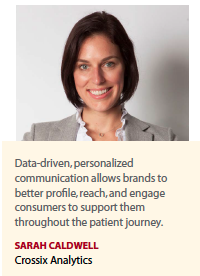 Five years ago, Texas State University published a research paper (Pharmaceutical Companies are Writing the Script for Health Consumerism) that laid out the theory that DTC advertising led to the undermining of physicians’ power over patient treatment and in turn empowered patients to make more of their own decisions. While this may have been the genesis of health consumerism, the onset of COVID-19 this year gave the movement the punch it needed to totally explode.
Five years ago, Texas State University published a research paper (Pharmaceutical Companies are Writing the Script for Health Consumerism) that laid out the theory that DTC advertising led to the undermining of physicians’ power over patient treatment and in turn empowered patients to make more of their own decisions. While this may have been the genesis of health consumerism, the onset of COVID-19 this year gave the movement the punch it needed to totally explode.
PwC’s Health Research Institute published the results of a survey of 2,533 Americans early in the pandemic. The report compares overall American consumer sentiment before and during the pandemic and found that people are accessing health information in new ways. From the survey, 5% of American consumers reported that they or a family member used telehealth for the first time during the pandemic, a total of about 16.5 million Americans. According to PwC, 88% of these new users said they would use it again.
“Patients and caregivers are far more engaged today in their care than in the previous era of ‘doctor knows best,’" says Maria Kirsch, senior VP, head of patient services operations at Eversana. “And, like all modern consumers, they expect outcomes to be transparent, personalized, delivered on their terms, powered by technology, and of high value."
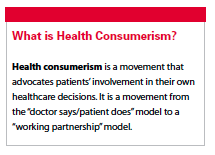 A Deloitte report also found that consumers are using virtual visits more than ever before and plan to continue using them. With the explosion of digital tools to manage health and the rise of classic “consumerism" in the healthcare space, this transformation in consumer behavior is driving many healthcare and life-sciences organizations to rethink their consumer relationships and patient engagement strategies.
A Deloitte report also found that consumers are using virtual visits more than ever before and plan to continue using them. With the explosion of digital tools to manage health and the rise of classic “consumerism" in the healthcare space, this transformation in consumer behavior is driving many healthcare and life-sciences organizations to rethink their consumer relationships and patient engagement strategies.
“The old model, which looked at consumers as ‘patients in need,’ is over," says Timmy Garde, chief innovation leader, LevLane Life Sciences. “Since the DTC revolution and the aggressiveness of social media, we now have empowered, informed, and motivated healthcare consumers."
The Future State Is Now
Deloitte analysts say consumers are already living in the future of healthcare and have become more activated; consumers’ attitudes and behaviors demonstrate they are prepared to make their own choices. Today’s consumers are increasingly willing to tell their doctors when they disagree with them, use tools to get information on costs and health issues, track their health conditions and use that data to make decisions, and access and use their medical record data.
“This new reality of health consumerism forces us to take a closer look at data and insights," Ms. Kirsch says. “How can we use data and analytics to build better patient-service programs that predict next-best actions and achieve improved patient engagement and outcomes across the treatment journey? As the industry continues its shift to value-based care, this challenge has never been timelier."
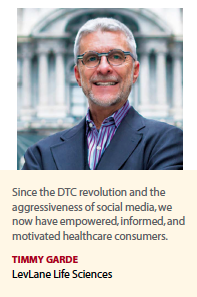 While other categories have focused on the user experience for many years, this is a relatively newer concept in health, says Kate Cronin, global CEO at Ogilvy Health.
While other categories have focused on the user experience for many years, this is a relatively newer concept in health, says Kate Cronin, global CEO at Ogilvy Health.
“Marketers will need to provide tools that help consumers/patients manage their health in a way that has less friction and fits within the person’s lifestyle," she says. “In addition, those tools will need to offer value and outcomes associated with their use. Also, as consumers increase their frequency of the use of an app or a health system, it should be equipped to use AI to get to know the person and therefore make recommendations that can be used to improve his/her overall wellness. The same applies to physicians who are looking for less friction in the system. Marketers will need to help them with tools as well as serve their needs as they make their decisions regarding the health and wellness of the patient."
According to Sarah Caldwell, general manager, Crossix Analytics, patients want more flexibility from how they access care to how they pay for it; they also want control over how their health is managed. “With access to health and treatment information online, they are more empowered than ever and come to appointments with a strong point of view," she says. “This has forced the role of the HCP to evolve. In addition to educating their patients about various treatments, doctors are now being asked to provide personalized information on price and generic alternatives."
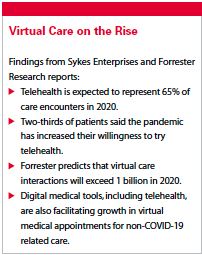 Actual doctor appointments have also evolved, due to technological advancements, she adds. Telehealth has helped increase access for patients who may not be able to have in-person visits due to distance or health restrictions.
Actual doctor appointments have also evolved, due to technological advancements, she adds. Telehealth has helped increase access for patients who may not be able to have in-person visits due to distance or health restrictions.
This was most evident during the spring, when there was a rapid increase in the number of HCPs and patients using telehealth. “Before the pandemic, less than 1% of patients and less than 3% of HCPs used telemedicine," Ms. Caldwell says.
“At the peak of stay-at-home orders, those numbers jumped to 34% of patients and 52% of HCPs. While many patients were eager to see their physicians in person again, 8% of all physician visits continue to be conducted via telehealth, with 42% of HCPs continuing to use it regularly."
What this means is that the industry needs to start addressing the needs of patients by educating physicians. Accenture reports that according to HCPs surveyed, pharma companies are increasingly providing education on how to better treat patients remotely and help them manage their conditions in light of COVID-19.
Transparency and Convenience
Patients have also become more demanding in terms of transparency in the cost of healthcare.“Just as consumers are used to shopping around to get the best value and convenience on purchases in other parts of their lives, they are demanding the same transparency in cost and options when it comes to their health," Ms. Caldwell adds. “As we move down this path, hospitals and health systems will be forced to share pricing more openly for their services, which may eventually lead to fewer cost discrepancies across the board."
Transparency around the cost of treatment will be more important in the future as there will be an uptick in symptom checkers, broader use of telehealth, and improved tools for decision making, Ms. Cronin says. “The patient will become increasingly more connected, given the post-COVID world, and will be more accustomed to managing their health remotely," she says. “Value will also be important as people will insist on knowing the costs before procedures, and insurance companies will need to adjust and move to a ‘no-surprises’ approach to medical bills."
The Public’s Changing Needs
Although the industry has started to deal with the challenges and changes created from healthcare consumerism, Deloitte data suggest there’s more that pharmaceutical companies could be doing to support providers and patients who want more virtual and self-directed interactions. For example, 65% of providers said they value self-administration methods for patients, including via auto-injectors or wearable devices, items that have been added to more and more wish lists as the pandemic has continued. Many patients reported that they want to go to their providers’ offices less often even after the public health crisis has abated, suggesting an opportunity for pharma companies to continue to respond to the public’s changing needs.
While all pharma companies emphasize the importance of driving better patient adherence to improve health outcomes, an estimated 50% to 60% of patients with chronic illnesses miss doses, take the wrong doses, or drop off treatment in the first year, according to McKinsey research. These lapses in treatment result in additional healthcare expenditures of $290 billion driven by nonadherence.
“However, pharma marketing campaigns are traditionally only focused on the beginning of the patient journey — starting new users on the brand," Ms. Caldwell says. “The good news is that these acquisition campaigns can also serve as an effective reminder for current patients to take their medicine and refill their prescriptions. Specifically, TV campaigns typically have large-scale and high-frequency reach to the vast majority of U.S. households. When Veeva Crossix analyzes the adherence impact of national TV campaigns for our clients, we see that TV messaging is an effective refill reminder and can serve to better support existing patients."
Beyond traditional media campaigns, brands are leveraging predictive modeling and AI to improve adherence. Using these tools, brands can engage micro-segments of patients with precise messaging at key moments when an adherence intervention will have the greatest impact. This data-driven, personalized communication allows brands to better profile, reach, and engage consumers to support them throughout the patient journey.
Mr. Garde says the use of patient stories is relevant for engaging and educating patients, but they must be authentic and encompass the whole consumer, not just the part that is a patient.
“The use of stories is more prominent today than ever before," he says. “But if we tell patient stories, we are only seeing them from the perspective of the healthcare provider. We need to take a more holistic approach as was done in the CPG vertical — to understand consumers and their specific stories.
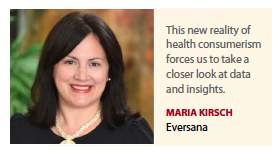 “We need Instagram-style stories, not long-drawn out productions," he continues. “No more ‘shiny, happy patients.’ We need real stories from real people, not patient-focused stories."
“We need Instagram-style stories, not long-drawn out productions," he continues. “No more ‘shiny, happy patients.’ We need real stories from real people, not patient-focused stories."
Before stories can be told however, Mr. Garde says marketers should be aware of the importance of nomenclature. For instance, what is the difference between a consumer and a patient? “With the COVID-19 pandemic, people may not think of themselves as patients, but the life-sciences industry certainly does," he says.
“What does this mean? It means that when the use of ‘patient stories’ is relevant for communications, we need to be cognizant of whether we are really talking ‘patients’ or ‘consumers.’"
According to Ms. Cronin, the use of behavioral science is a tool that can be used to promote better outcomes. Traditional approaches to understanding people have been based on demographics, or on what people say, or on their tracked behavior. The problem with those tools is that while they may appear to sharpen the focus a bit, they are often irrelevant. “Just because two people seem very much alike in age, gender, ethnicity, and education, does not mean they are both wired the same way inside," she says. “For example, we can delve into a ‘care-avoidant’ population with behavioral science to understand why they are not adherent to medication, what are their inherent biases, and how do we motivate to change their perspectives using behavioral science techniques."
Brands can deploy both educational and motivational offerings in conjunction with a therapy to create a more holistic approach to a care program. Unique partnerships can be created with organizations that reach the patient in their day-to-day life, including gyms, car lift companies, grocery stores and food manufacturers. “These partnerships can help consumers/patients improve their overall health through their daily activities," Ms. Cronin says. “Marketers can also apply the science of data-driven customer relationship marketing to foster a deeper level of connectivity and commitment. With the ability to triangulate among known individual behaviors, modeled cohort behaviors and brand offerings, marketers can now offer a fluid, customized brand support experience that will help to inspire and manage patients to stick to treatment, partner with their HCP and maintain the lifestyle changes necessary for more positive health, and therefore societal, outcomes."
The current generation of patient services can no longer depend on the one-size-fits-all model. Manufacturers can achieve greater value by advancing beyond the traditional model to building a patient program that focuses on the unique needs of each patient. “Just as music and TV streaming services have become hyper-personalized, marketers should aspire to deliver customized patient and HCP healthcare experiences," Ms. Kirsch says. “Doing this changes the narrative by viewing patients as whole persons and fitting healthcare into their already hectic lives. Removing burden, improving transparency, and introducing convenience will most certainly improve health outcomes."
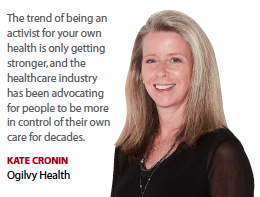 According to Deloitte, the COVID-19 crisis has resulted in significant disruption to commercial models and customer engagement processes for many life-sciences companies.
According to Deloitte, the COVID-19 crisis has resulted in significant disruption to commercial models and customer engagement processes for many life-sciences companies.
As some hospitals and physicians begin to plan for reactivation and recovery of their operations, pharma and medtech commercial leaders face new questions that go beyond addressing the near-term impact. Five of the most pressing considerations include:
How to help customers accelerate their recovery and strengthen long-term relationships?
How to adapt the commercial model to evolve the sales and support engagement model and build a new foundation for sustained success?
How to strategically invest in virtual engagement capabilities and targeted nonpersonal promotion that offer a highly flexible, adaptable model for the long run, as well as in case subsequent waves of outbreak should occur?
How to evaluate the role of direct-to-patient (DTP) channel strategies relative to your portfolio of products and to pursue models that provide sustained access and adherence during times of disruption?
How to “reboot" and flexibly deploy field resources, taking into account local and customer variances?(PV)


















